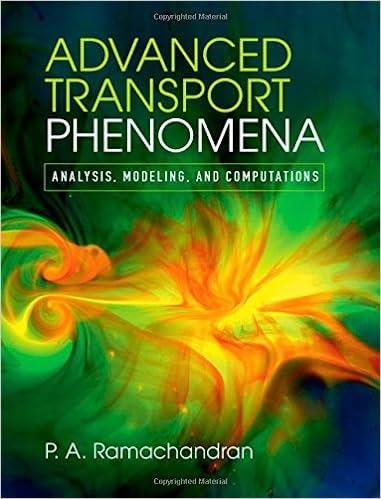Consider the motion of the particle in the initial stages, i.e., before it reaches the terminal velocity.
Question:
Consider the motion of the particle in the initial stages, i.e., before it reaches the terminal velocity. Include the acceleration terms in the momentum balance of the particle and derive the following equation for the velocity as a function of time:
\[v(t)=v_{\mathrm{t}}\left[1-\exp \left(-\frac{9 \mu t}{2 ho_{\mathrm{p}} R^{2}}\right)\right]\]
Here \(v_{\mathrm{t}}\) is the terminal velocity and the initial velocity is zero. Also the Stokes drag value is assumed to hold throughout the process. The time constant for settling is therefore the reciprocal of the constant in the exponential term above. This is usually small, and therefore it is usually assumed that the terminal velocity is reached instantaneously.
Step by Step Answer:

Advanced Transport Phenomena Analysis Modeling And Computations
ISBN: 9780521762618
1st Edition
Authors: P. A. Ramachandran





